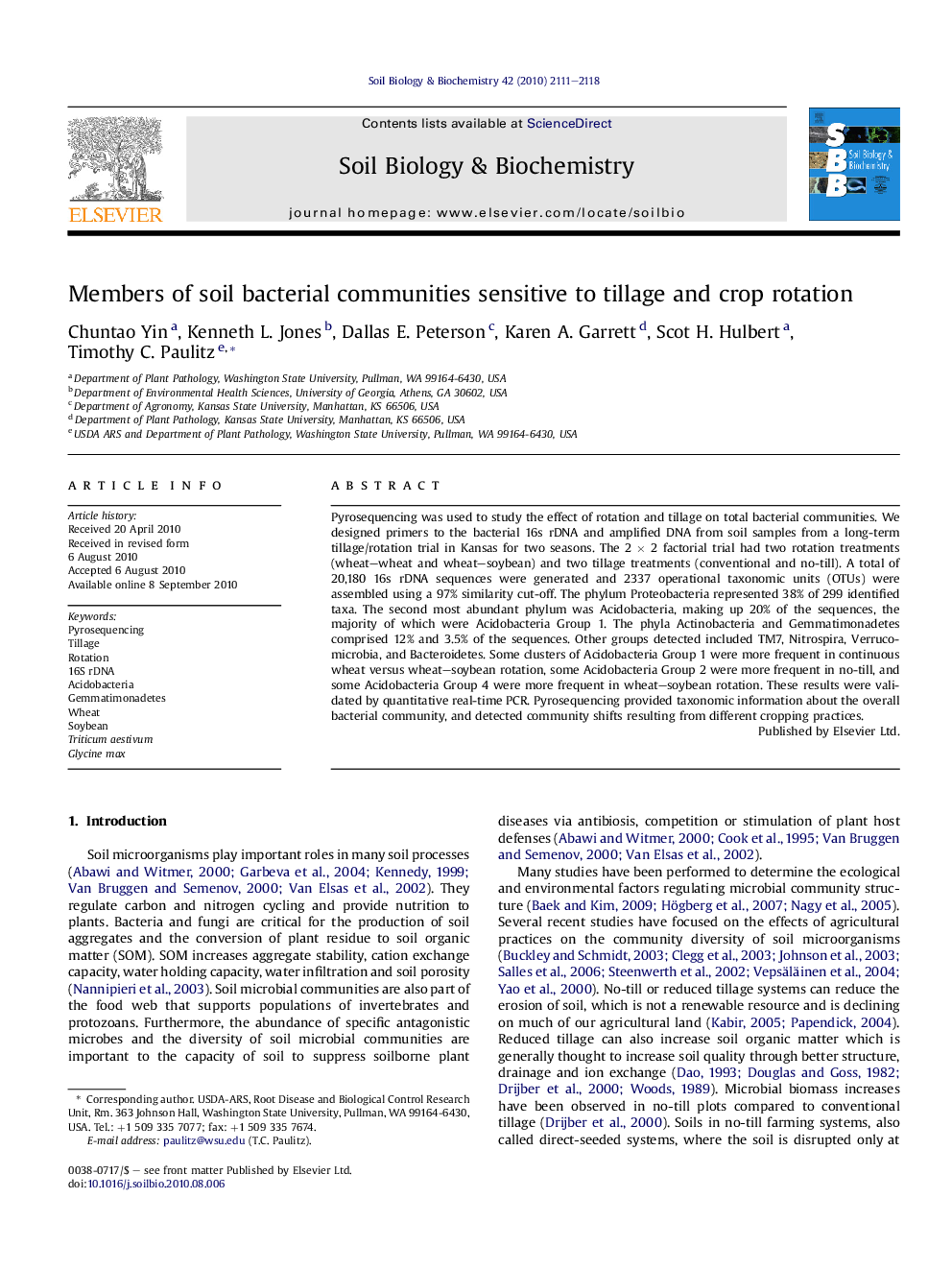| Article ID | Journal | Published Year | Pages | File Type |
|---|---|---|---|---|
| 2025364 | Soil Biology and Biochemistry | 2010 | 8 Pages |
Pyrosequencing was used to study the effect of rotation and tillage on total bacterial communities. We designed primers to the bacterial 16s rDNA and amplified DNA from soil samples from a long-term tillage/rotation trial in Kansas for two seasons. The 2 × 2 factorial trial had two rotation treatments (wheat–wheat and wheat–soybean) and two tillage treatments (conventional and no-till). A total of 20,180 16s rDNA sequences were generated and 2337 operational taxonomic units (OTUs) were assembled using a 97% similarity cut-off. The phylum Proteobacteria represented 38% of 299 identified taxa. The second most abundant phylum was Acidobacteria, making up 20% of the sequences, the majority of which were Acidobacteria Group 1. The phyla Actinobacteria and Gemmatimonadetes comprised 12% and 3.5% of the sequences. Other groups detected included TM7, Nitrospira, Verrucomicrobia, and Bacteroidetes. Some clusters of Acidobacteria Group 1 were more frequent in continuous wheat versus wheat–soybean rotation, some Acidobacteria Group 2 were more frequent in no-till, and some Acidobacteria Group 4 were more frequent in wheat–soybean rotation. These results were validated by quantitative real-time PCR. Pyrosequencing provided taxonomic information about the overall bacterial community, and detected community shifts resulting from different cropping practices.
Research highlights► Pyrosequencing can detect shifts in bacterial taxa due to tillage and crop rotation. ► The Phylum Acidobacteria was a predominant component of the soil in a long-term wheat study site in Kansas. ► Groups of Acidobacteria were affected by tillage and crop rotation in a long-term wheat study site in Kansas.
